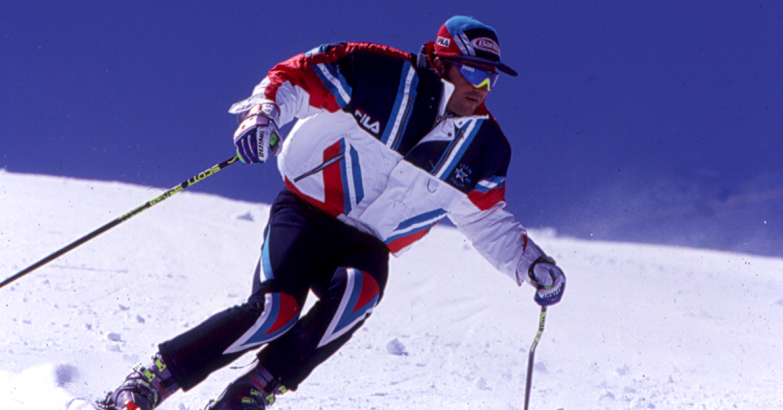PORTRAITS: ALBERTO TOMBA
Welcome back to Portraits, the series that revisits the stars who have defined FILA’s journey. Alberto Tomba was far more than a skiing champion: he reignited Italy’s passion for winter sports.
Born in San Lazzaro (Bologna, 19 December 1966), Tomba came from a region far removed from the mountains. This unusual background led former skier and commentator Bruno Gattai to describe him as a “UFO that landed on the planet of skiing”. Yet from 1986 to 1998, Tomba became a dominant force in giant slalom and slalom, establishing himself as the undisputed specialist in technical disciplines.
Trained under Roberto Siorpaes, the young Tomba honed his craft on the slopes of Cortina and the Marmolada (Dolomites). Over time, he developed a style that combined sheer strength with refined technique, punctuated by dramatic breakaways and comebacks. The International Ski and Snowboard Federation hailed him as “the greatest skier of all time”. Even the legendary Ingemar Stenmark praised him: “Alberto revolutionised technique – he is a milestone in skiing.”
Tomba’s career haul is remarkable: fifty World Cup victories, placing him third in the all-time rankings behind Stenmark and Hermann Maier. He won the Overall Cup in 1995 and eight Speciality Cups. He was also the first athlete to achieve two gold medals in the same alpine skiing discipline at consecutive Games (Calgary 1988, Albertville 1992). His achievements include Olympic gold in special slalom (Calgary 1988) and double gold in giant slalom and special slalom at the 1996 World Championships in Sierra Nevada.
In the 1990s, FILA became the official sponsor of FISI, and Tomba emerged as the face of a golden age of Italian skiing, alongside Deborah Compagnoni, Manuela Di Centa and Stefania Belmondo. FILA, already pioneering the use of GORE-TEX® in ski equipment, designed uniforms with Carbon Kevlar, innovative fibres that acted as armour. Tomba memorably wore the iconic orange suit in 1994. When FILA returned as Federation sponsor in 2004, Tomba had already paved the way for a new generation of promising skiers, known collectively as the “Red Avalanche” for their striking uniforms.
Over time, Tomba earned the nickname La Bomba (“the bomb”), capturing both his explosive energy and the affection of fans. His popularity was so high that during the 1988 Winter Olympics, the Sanremo Music Festival interrupted its live broadcast to show his decisive second run.
After retiring in 1998 (Nagano Games), Tomba reinvented himself as an actor (Alex l’ariete, 2000), television commentator and even sommelier. His story is told in the autobiography Prima e seconda manche (2008) and in the documentary Vincere in salita (2023).


